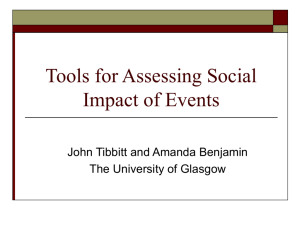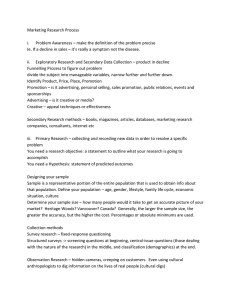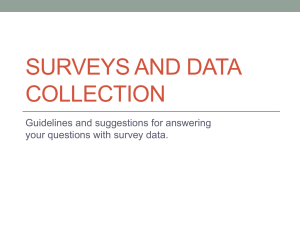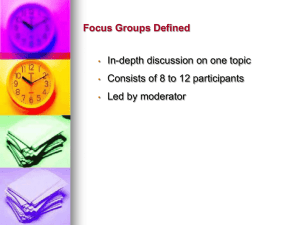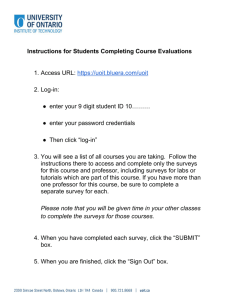Part 2: Assessment Planning Matrix Direct Measures
advertisement
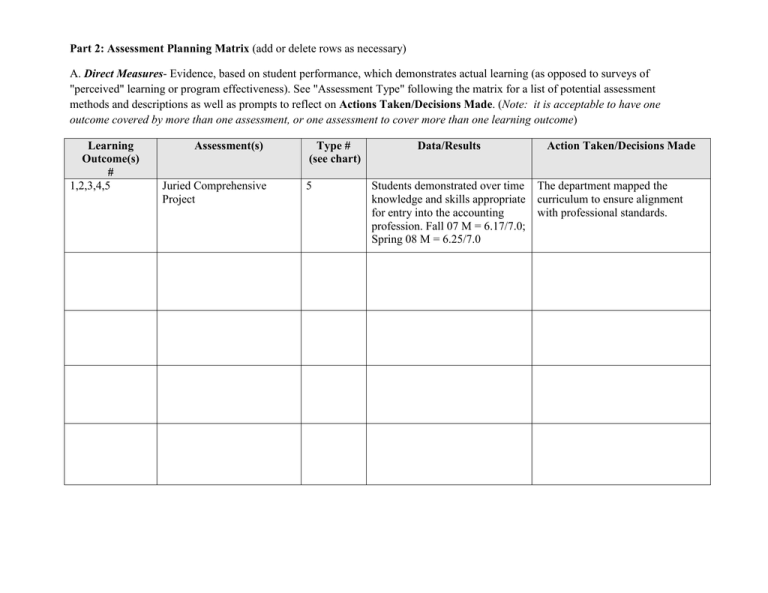
Part 2: Assessment Planning Matrix (add or delete rows as necessary) A. Direct Measures- Evidence, based on student performance, which demonstrates actual learning (as opposed to surveys of "perceived" learning or program effectiveness). See "Assessment Type" following the matrix for a list of potential assessment methods and descriptions as well as prompts to reflect on Actions Taken/Decisions Made. (Note: it is acceptable to have one outcome covered by more than one assessment, or one assessment to cover more than one learning outcome) Learning Outcome(s) # 1,2,3,4,5 Assessment(s) Juried Comprehensive Project Type # (see chart) 5 Data/Results Students demonstrated over time knowledge and skills appropriate for entry into the accounting profession. Fall 07 M = 6.17/7.0; Spring 08 M = 6.25/7.0 Action Taken/Decisions Made The department mapped the curriculum to ensure alignment with professional standards. B. Indirect Measures -Reflection about the learning gained, or secondary evidence, such as surveys of student perceptions. (Please refer to "assessment type" following the matrix for appropriate coding and prompts to reflect on actions taken/decisions made.) Learning Outcome(s) # 1,2,3,4,5 Assessment(s) Exit Survey Type # + (see chart) 12 Data/Results Results, over time, indicate students are generally satisfied with their knowledge and skills appropriate for entry into accounting profession. Fall 2007 M= 4.0/5.0, Spring 2008 M=4.25/5.0. Action Taken/Decisions Made A departmental committee was formed to monitor and maintain improvement of student satisfaction. +Assessment Type Legend (use numbers in "Type" column above) Direct Measures (evidence. based on student performance, which demonstrates the learning itself) 1. Locally Developed Achievement Measures. This type of assessment generally is one that has been created by the individual faculty members, their department, the college or the university to measure specific achievement outcomes, usually identified by the department and its faculty. 2. Internal or External Expert Achievement. This type of assessment involves an expert using a pre-specified set of criteria to judge a student's knowledge, and/or disposition and/or performance. 3. Nationally Standardized Achievement Tests. These assessments are produced by an outside source, administered nationally for comparison purposes, and usually measure broad exposure to an educational experience. 4. Portfolio Analysis. A portfolio is a collection of representative student work over a period of time. A portfolio often documents a student's best work, and may include a variety of other kinds of process information (e.g., drafts of student work, student's self' assessment of their work, other students' assessments). Portfolios may be used for evaluation of a student's abilities and evidence of improvement. The portfolio can be evaluated at the end of the student's career by an independent jury or used formatively during a student's educational journey towards graduation. 5. Capstone Experience. Capstone experiences integrate knowledge, concepts, and skills associated with an entire sequence of study in a program. Evaluation of students' work is used as a means of assessing student outcomes. 6. Writing Skill Assessment. Evaluation of written language. 7. Performance Assessment. This type of assessment integrates knowledge, skills, and activity to demonstrate competence. 8. Other: _____________________________ Indirect Measures (reflection about the learning experience or secondary evidence of its existence) 9. Persistence Studies. The number/percentage of students who, from entry into the university, graduate/complete the program within a given number of years, usually 6 to 7. 10. Student or Faculty Surveys (or Focus Groups or Advisory Committees). This type of assessment involves collecting data on one of the following: a) perceptions of knowledge/skills/dispositions either from a student, faculty, or group, b) opinions about experiences in a course/program or at the university. c) Opinions about the processes or functioning of department/course/program, d) minutes from an advisory committee. 11. Alumni Surveys (or Focus Groups or Advisory Committee). This type of assessment involves collecting data on the same topics as presented in "Student or Faculty Surveys" presented above, except the respondent is a past graduate and not a current student or faculty. 12. Exit interviews. Individual or groups interviews of graduating students. Could be a survey format, but also can involve face-to-face interviews. 13. Placement of Graduates. Any data that surveys post-graduate professional status. Data can include graduate employment rates, salary earned, position attained geographic locations, etc. 14. Employer Satisfaction Surveys. Employer surveys can provide information about the curriculum, programs, and students that other forms of assessment cannot produce. Through surveys, departments traditionally seek employer satisfaction levels with the abilities and skills of recent graduates. Employers also assess programmatic characteristics by addressing the success of students in a continuously evolving job market. 15. Other (please name): _______________(please describe)_______________________________ Prompts to consider when determining Actions Taken/Decisions Made: 1. Did you map the curriculum to align with professional standards of the discipline and University Mission? 2. How did you strengthen the coursework and/or program of study? 3. How did you revise instruction to enhance learning? 4. When a learning outcome is achieved, what is your next step? 5. Other?
